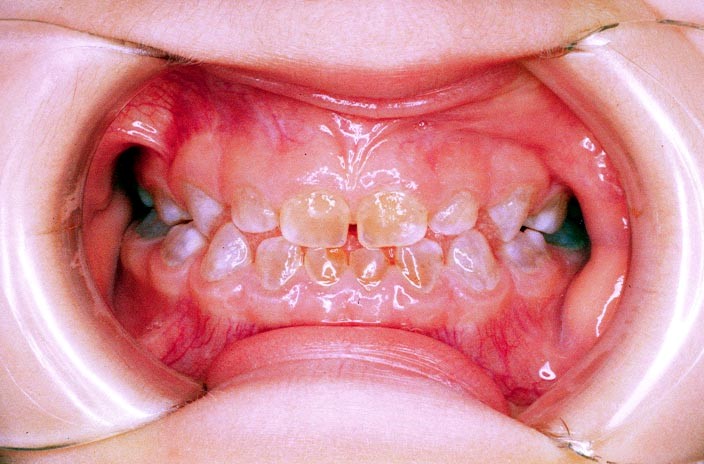Osteogenesis imperfecta
1.2. Dentinogenesis imperfecta
The most well-known dental alteration associated with OI is dentinogenesis imperfecta (DI), which involves abnormal dentin formation. As mentioned earlier, this tissue is rich in type I collagen, which can be affected by OI. Dentin is responsible for the whitish colour of teeth, as the translucent enamel covering allows the underlying dentin colour to show through. Clinically, teeth affected by DI display a greyish or yellowish-brown discolouration (see Figure 3). The primary dentition (baby teeth) is generally more affected by DI than the permanent dentition. However, the severity of DI can vary significantly, with some teeth being severely impacted while others show minimal involvement in the same patient or among different family members with OI.
Another consequence of DI is increased fragility. The enamel separates more easily from the malformed dentin, exposing the more fragile dentin layer. This makes the affected tooth less wear-resistant and more prone to fractures.
